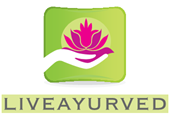|
|
|

|
Written and Reviewed By :
Dr. Riddhi P. Sardhara.
|
What is Deep Vein Thrombosis (DVT)?
Deep Vein Thrombosis (DVT) is a medical condition where blood clots form in the deep veins of the body, usually in the legs. This can lead to pain, swelling, and inflammation, and may become life-threatening if the clot travels to the lungs (pulmonary embolism).
Common Causes and Risk Factors of DVT
Physical trauma or injury.
Prolonged bed rest (e.g., after paralysis or major illness).
Sitting or standing for long periods without leg support.
Blood clotting disorders.
Cancer or undergoing cancer treatment.
Cardiovascular diseases.
Smoking.
Major surgeries.
Chronic infections.
Obesity.
Family history of thrombosis.
Vein catheterization.
Hormonal therapies or oral contraceptive pills.
Symptoms of Deep Vein Thrombosis
Pain or tenderness in the affected leg or vein.
Swelling or inflammation.
Warmth in the affected region.
Skin discoloration; red or bluish tone over the clot area.
When to Seek Medical Attention?
Consult a doctor immediately if you experience:
Initial symptoms of leg pain, swelling, or discoloration.
Chest pain, dizziness, or shortness of breath (may indicate pulmonary embolism).
Rapid heart rate or extreme fatigue.
Necrosis or tissue darkening in the affected area.
Early intervention can prevent serious complications.
|
Effective Home Remedies for DVT (Supportive, Not a Substitute for Medical Care)
Caution: These supportive remedies may help manage the symptoms of Deep Vein Thrombosis. Always consult a healthcare professional before starting any home treatment.
Consuming licorice root internally may help relieve pain and inflammation associated with DVT.
Taking giloy powder mixed with honey supports blood circulation and helps reduce discomfort.
While sitting, ensure your legs are well-supported and relaxed.
Avoid prolonged standing or sitting in one position for extended periods.
Wearing stockings improves blood flow and helps prevent clot formation.
Rest with your legs elevated for 15-20 minutes daily to encourage venous return.
Applying ice packs can help reduce swelling and inflammation in the affected area.
Ginger & black pepper tea combination helps to naturally thin the blood and reduce clotting risk.
Rich in omega-3 fatty acids, flaxseed helps maintain healthy circulation.
Avoid processed and high-fat foods. Eat a nutrient-rich diet to support vascular health.
Dietary support
Green leafy vegetables, citrus fruits (lemons, oranges), pomegranate, and amla are good for antioxidant and anti-inflammatory benefits.
Consuming turmeric mixed with amla juice daily can support anti-clotting properties.
Drinking warm water with fenugreek seed powder may help reduce clotting and improve blood flow.
|
|
Manuscripts are invited for next Issue at ijapc.com
Features
Herbs and Medicinal Plants
|

